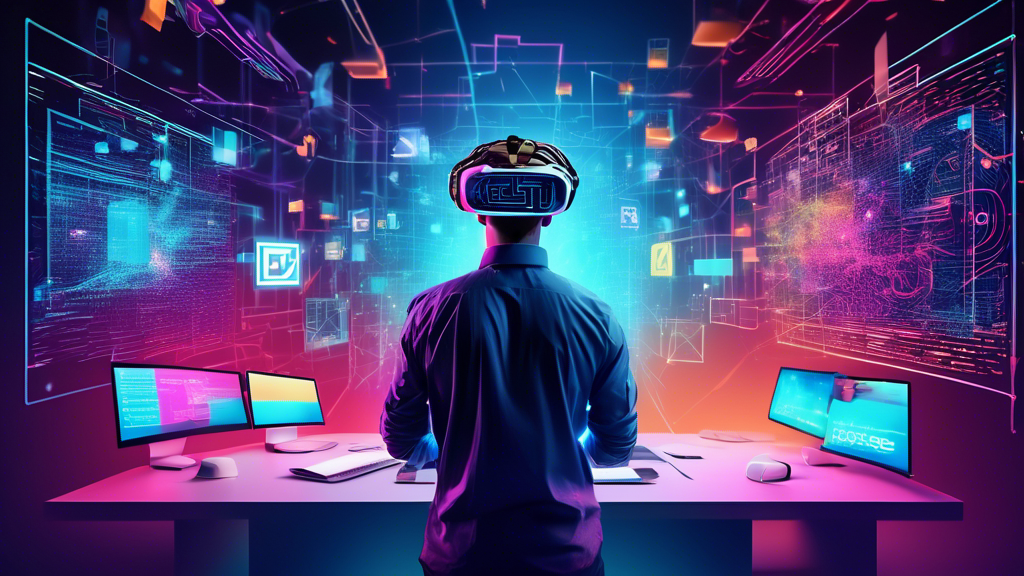Integrating Virtual Reality into Web Development: A Guide
In the vast expanse of the digital universe, web development constantly evolves, unfurling new dimensions that tantalize the imagination. Among these burgeoning innovations, virtual reality (VR) emerges as a compelling frontier, offering an immersive experience that transcends the flat landscapes of traditional web interfaces. But how does one weave the intricate tapestry of VR into the fabric of web development? In this guide, we shall embark on a journey through the realm of integrating virtual reality into web development, ensuring that by the end, you’ll be ready to turn the digital world on its head—quite literally, in some VR cases.
The Basics of VR in Web Development
Before diving into the how-to, let’s set the stage with a bit of context. Virtual reality in web development, often referred to as WebVR, allows users to interact with immersive, 3D environments using nothing but their web browsers and VR headsets. This technology paves the way for a multitude of applications, from virtual tours and interactive education to gaming and ecommerce experiences that leap off the screen.
But, as Spider-Man’s Uncle Ben might have said if he were a web developer, With great power(ups) comes great responsibility. Implementing VR in web development isn’t just about flashy graphics and ‘wow’ moments. It’s about creating intuitive, accessible experiences that enhance, rather than complicate, the user journey.
Tools and Technologies
A-Frame
At the heart of many WebVR projects is A-Frame, an open-source web framework that allows developers to create VR experiences using HTML. A-Frame is to VR what WordPress is to blogging – a game-changer that democratizes creation. It supports most VR headsets and integrates with other web technologies, making it a versatile tool in your VR toolkit.
Three.js
For those seeking more control and power, Three.js steps into the spotlight. This JavaScript library enables the creation of detailed, interactive 3D graphics that run smoothly in web browsers, without necessitating a PhD in quantum physics to understand. Pair it with VR for truly immersive experiences that could make users late for dinner because they forgot they were in their living room, not Ancient Rome.
WebXR API
The WebXR API is the backbone that supports VR and AR (augmented reality) on the web. It’s the bridge that allows your web applications to leverage the full capabilities of VR headsets and AR devices. Understanding WebXR is crucial for creating sophisticated VR/AR experiences on the web.
Step-by-Step Guide to Integrating VR into Your Web Projects
Now, let’s get down to brass tacks. How do you actually integrate VR into your web development projects? Follow these steps, and you’ll be creating virtual worlds in no time.
- Understand Your Audience: Just because you can make your website a virtual reality bonanza doesn’t mean you should. Consider your target audience and whether VR will enhance or detract from their experience.
- Choose the Right Tools: Depending on your project’s complexity and goals, select the appropriate framework or library, such as A-Frame for beginners or Three.js for more complex projects.
- Design for VR: Designing for VR is a different ballgame. You’ll need to consider user navigation, interaction, and even potential motion sickness. It’s like designing a theme park—every detail contributes to the user’s journey.
- Develop and Test: With your audience and design in mind, start building your VR experience. Regular testing on various devices and headsets is crucial, as performance and usability can vary widely.
- Optimize and Launch: Optimize your VR content for faster loading times and smoother experiences. Then, launch your VR-enhanced web project into the world—or, perhaps more accurately, bring the world into your project.
Case Studies: VR in Action
To inspire your ventures into VR web development, let’s glance at a few success stories:
- Virtual Tours: Real estate websites offer virtual tours of properties, allowing potential buyers to explore homes without ever stepping foot inside.
- Educational Experiences: Museums and educational platforms use VR to transport users to ancient civilizations, deep-sea environments, or the intricacies of the human body.
- Interactive Ecommerce: Some ecommerce sites provide virtual try-on features or 3D product views, enhancing the shopping experience and reducing return rates.
Conclusion
Virtual reality in web development opens up a universe of possibilities, from immersive storytelling and interactive education to revolutionary ecommerce experiences. By understanding the tools and techniques for integrating VR, embracing meticulous design, and considering your audience, you can forge unforgettable web experiences that captivate and engage users in new dimensions.
Remember, integrating VR into your web projects isn’t just about using cutting-edge technology. It’s about crafting experiences that resonate with users on a profound level, making them feel like they’ve stepped into a world crafted just for them. And, occasionally, making sure they don’t bump into furniture while exploring ancient ruins or runway fashion from the comfort of their home.
Ready to Take Your Web Development to New Dimensions?
If you’re intrigued by the potential of VR in web development and ready to explore how it can transform your projects, we’re here to help. At StarMetaverseGeorgia, we specialize in pushing the boundaries of what’s possible on the web, blending the latest technologies with innovative design to create standout digital experiences. Whether you’re looking to dive headfirst into VR or just dipping your toes into immersive web design, our team has the expertise to bring your vision to life. Let’s create something extraordinary together.

Comments are closed